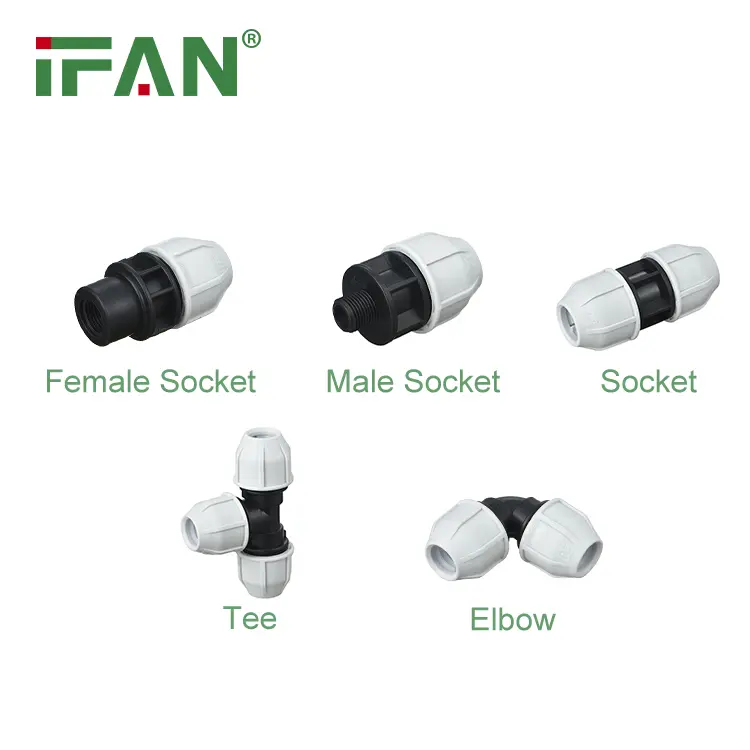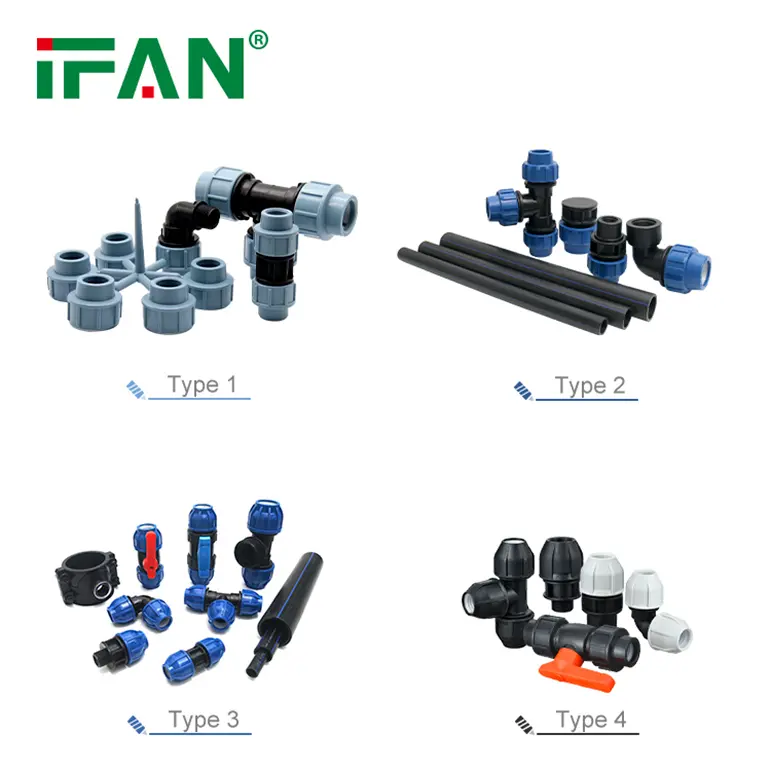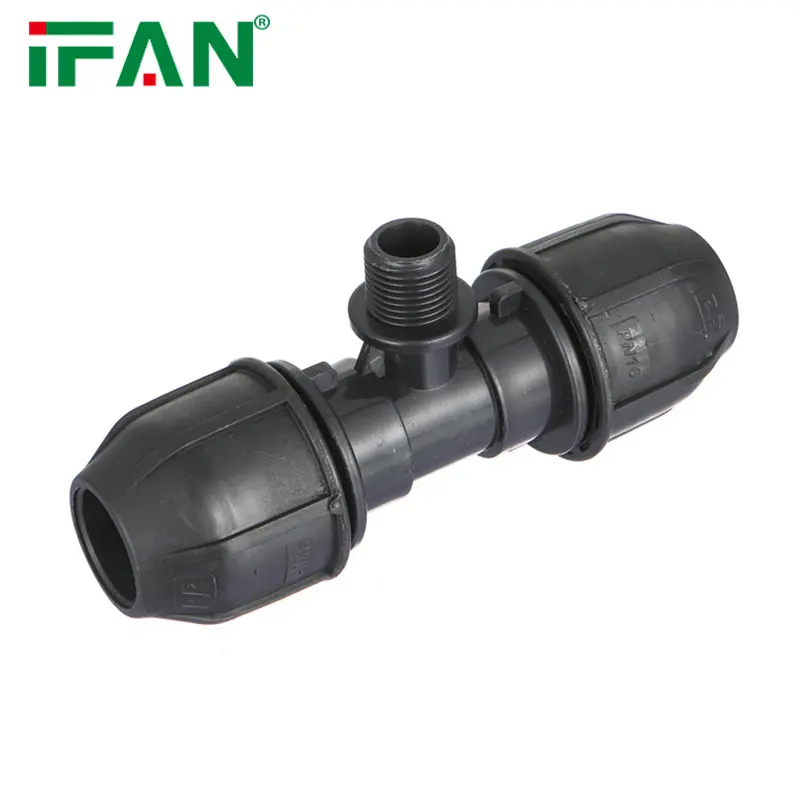High-Density Polyethylene (HDPE) fittings are known for their impressive durability and versatility. One of their critical properties is their resistance to ultraviolet (UV) radiation. This article will delve into the UV resistance of them, exploring how it impacts their performance and suitability for various applications.
1. Understanding UV Resistance
UV resistance refers to a material’s ability to withstand degradation caused by exposure to ultraviolet light. HDPE fittings are designed to maintain their structural integrity and functionality despite prolonged exposure to sunlight. This resistance is crucial for applications where the fittings are exposed to outdoor conditions.
HDPE, by nature, is sensitive to UV radiation. Without proper additives, it can become brittle and crack over time. Therefore, manufacturers incorporate UV stabilizers into HDPE fittings to enhance their resistance. These stabilizers absorb UV radiation and prevent it from breaking down the polymer chains within the material.
2. Mechanism of UV Protection
The UV stabilizers in HDPE fittings work by absorbing UV radiation and dissipating it as harmless heat. This prevents the UV rays from penetrating the material and causing chemical changes that can lead to brittleness and failure.
For instance, in outdoor irrigation systems where they are exposed to direct sunlight, UV stabilizers prevent the fittings from becoming brittle. This protection ensures the fittings remain flexible and functional throughout their service life.
3. Benefits of UV Resistance
The UV resistance of them provides several benefits. First, it extends the lifespan of the fittings, making them suitable for long-term use in outdoor applications. Second, it reduces the need for frequent replacements or repairs, which can be costly and time-consuming.
For example, in agricultural irrigation systems, they are exposed to sunlight and varying weather conditions. UV resistance ensures that these fittings maintain their performance and do not degrade, reducing maintenance needs and costs.
4. Impact on Outdoor Applications
In outdoor applications, UV resistance is vital for ensuring the durability and reliability of them. Without UV protection, fittings could suffer from accelerated degradation, leading to potential leaks and system failures.
In construction projects where they are used in exposed settings, such as in landscape irrigation or outdoor plumbing, UV resistance is essential. The ability to withstand sunlight ensures that the fittings continue to perform effectively and reliably.
5. Examples of UV Resistance in Practice
Several real-world examples demonstrate the importance of UV resistance in HDPE fittings. For instance, in municipal water supply systems, HDPE fittings are often installed in areas with high UV exposure. The UV stabilizers in these fittings prevent them from deteriorating, ensuring the longevity and reliability of the water distribution system.
Similarly, in residential settings, HDPE fittings used in outdoor rainwater harvesting systems benefit from UV resistance. This property ensures that the fittings can endure constant exposure to sunlight without compromising their integrity.
6. Comparison with Other Materials
When compared to other materials, HDPE fittings with UV resistance offer superior performance. For instance, metal fittings often suffer from rust and corrosion when exposed to sunlight and moisture. In contrast, UV-resistant HDPE fittings do not rust and are more resilient to environmental factors.
Additionally, compared to other plastic materials, HDPE with UV stabilizers provides better long-term performance. While some plastics may degrade quickly under UV exposure, HDPE maintains its properties and functionality over a longer period.
7. Testing and Standards for UV Resistance
To ensure that HDPE fittings meet UV resistance requirements, they undergo rigorous testing. Standards such as ASTM D638 and ASTM D1693 outline the procedures for assessing UV resistance. These tests simulate prolonged UV exposure to evaluate the material’s durability and performance.
Manufacturers adhere to these standards to ensure that their HDPE fittings offer reliable UV protection. Compliance with these standards guarantees that the fittings can withstand the demands of real-world applications.
8. Maintenance and Care
Although UV-resistant HDPE fittings require less maintenance than non-UV-resistant alternatives, regular checks are still beneficial. Inspecting the fittings for signs of wear, such as discoloration or cracking, can help identify potential issues early.
In cases where HDPE fittings show signs of degradation, prompt replacement or repair is recommended. This proactive approach helps maintain system integrity and prevents further damage.
9. Impact on Installation Practices
The UV resistance of them influences installation practices. For example, when installing HDPE fittings in areas with high UV exposure, proper alignment and secure connections are essential to ensure long-term performance.
In some cases, additional protective measures, such as UV-resistant coatings or insulation, may be used to enhance the fittings’ durability. These practices ensure that the fittings continue to perform effectively even in challenging conditions.
10. Economic Considerations
Investing in UV-resistant HDPE fittings can result in long-term cost savings. While these fittings may have a higher initial cost compared to non-UV-resistant alternatives, their extended lifespan and reduced maintenance needs offset the initial investment.
For example, in large-scale irrigation projects, using UV-resistant HDPE fittings reduces the frequency of replacements and repairs. This cost-effectiveness makes them a preferred choice for both residential and commercial applications.
11. Future Developments in UV Resistance
Ongoing research and development efforts focus on improving the UV resistance of them. Innovations in UV stabilizer technology aim to enhance the material’s performance and extend its lifespan even further.
Future advancements may lead to HDPE fittings with superior UV resistance, offering even greater durability and reliability. These developments will continue to support the growing demand for high-performance materials in outdoor and exposed environments.
12. Case Studies and Real-World Applications
Several case studies highlight the effectiveness of UV-resistant HDPE fittings. For example, in coastal regions where fittings are exposed to saltwater and sunlight, UV-resistant HDPE performs exceptionally well, maintaining its integrity and functionality.
In agricultural applications, where irrigation systems are often exposed to direct sunlight, UV-resistant HDPE fittings ensure that the systems remain operational and efficient throughout their service life.
Conclusion
UV resistance is a critical factor in the performance and longevity of them. The incorporation of UV stabilizers enhances the material’s ability to withstand prolonged exposure to sunlight, preventing degradation and ensuring reliable performance. By understanding the benefits and applications of UV-resistant HDPE fittings, stakeholders can make informed decisions that enhance the durability and efficiency of their systems. From outdoor irrigation to municipal water supply, UV-resistant HDPE fittings offer a valuable solution for various applications, providing long-term performance and cost-effectiveness.
If you have read this article and have any questions, please feel free to contact IFAN. Below is our contact information:
Whatsapp:+86 13373827623
Email:[email protected]
























































